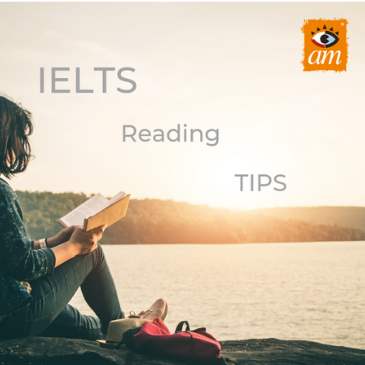IELTS Reading Tips #2:
5 Reading Tips to improve your reading
#IELTSMalta: Prepare for #IELTSinMalta with AM Language.
So much to read! So little time?
The reading part of the IELTS exam is divided in to three sections. In each section, you are allocated just 20 minutes, which doesn’t seem a lot. Here are 5 tips to help you improve your reading skills, which are the sort of useful tricks you can learn on our IELTS Course in Malta.
- Read the questions first
You only have 20 minutes, and you can easily waste time. Before reading the text, it is best to first read the questions and think about what the questions are asking you. As a result, when you come to read the text you already know what you are looking for. To help you identify what the question is asking you, highlight key words that can help you understand exactly what the question is asking. For example, if the questions are true, false or not given questions, it best to highlight important terms, nouns, verbs and adjectives.
Example: John had difficulty picturing his girlfiend when asked to describe her.
Once you’ve spotted these key terms, paraphrase the question in your own words, and develop a clear picture of what the question is asking you.
Example: Did John struggle to see an image of his girlfriend when trying to describe what she looks like?
- Read for Gist/Skim Reading
Reading for gist requires you to skim through the test. This can be a good subskill to develop in order to quickly discover what the text is about, how the text is broken up, and to identify key aspects of the text, such as the structure of ideas and format. To skim read, you don’t want to read every word quickly. The word gist refers to the general idea of something, and that is what you want to obtain. This can help you, because after having read the questions, you can then skim through the text to locate the various paragraphs and sentences that refer to various questions.
- Scan Reading
Scan reading is when you look for specific language in the text, and this can be very helpful when determining key language in questions and text. For this, you’re looking to answer specific questions, and to do so, you are looking for specific language be it adjectives, verbs, nouns or grouping of words that have a similar or dissimilar meaning to the language in the question. This method can save time, and complements the first two tips.
- Lexical Sets & Lexical chains
Lexical sets, to put it simply, are words that a topic is formed around, such as words like crime, climate change, and childhood. Lexical chains are a series of words that can be found in a text that are related to the lexical set. For example, if our lexical set is ‘crime’, then the words that we are likely to find that make up the lexical chain would be words like theft, burglar, police and guilty. By identifying both the lexical set and the lexial chains, it allows us to develop our scan reading skills that help us identify key information when scanning for important information, whether you are answering True, False or Not Given questions, or summarising questions.
- Time Management Strategies
There are a few time management strategies you can implement to help you use your time wisely.
It is tempting to first read the text without reading the questions, but this will eat into your time and leave you rushing your answers. Therefore, we suggest the following procedure in order to manage your time wisely.
Read the title and any sub-titles and predict what the text is going to be about.
Read all the questions and consider paraphrasing some questions in order to clarify what the question is asking you.
Read the text for gist noting paragraphs and sentences that are relevant to the questions.
Once you have noted the various paragraphs and sentences that are relevant, scan read specific paragraphs in relation to asking the questions.
If you come across any words you do not understand, cover the word with your thumb and complete the sentence with a word you would use. This technique can often help you understand the meaning of the word because you are paying attention to the use of language in context.
Once you have answered the questions, read through your answers again. You need to have at least 2 to 3 minutes in order to have enough time to read through properly
Want to know more?
If you’ve found this article helpful and would like to know more about the best ways to prepare for IELTS make sure you follow the link to our website and download our IELTS brochure. Many students are looking to prepare for IELTS in Malta, and AM Language has a great course that helps you achieve your IELTS goals. The course is particularly good for people who are preparing to go to university or looking to do a masters at university. https://www.amlanguage.com/learn/ielts/?utm_source=newsletter&utm_medium=email&utm_campaign=am-language-ielts










